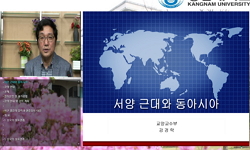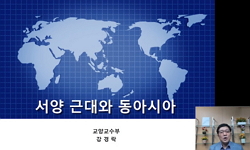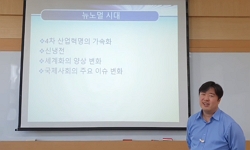특정한 紀元을 기준으로 햇수를 세는 방식을 `紀年(法)`이라고 한다. 오늘날 기년이란 하나의 도구적 장치로만 여겨지지만, 근대 초까지 그것은 정치권력과 이념, 사상, 종교적 믿음과 문화...
http://chineseinput.net/에서 pinyin(병음)방식으로 중국어를 변환할 수 있습니다.
변환된 중국어를 복사하여 사용하시면 됩니다.
- 中文 을 입력하시려면 zhongwen을 입력하시고 space를누르시면됩니다.
- 北京 을 입력하시려면 beijing을 입력하시고 space를 누르시면 됩니다.
https://www.riss.kr/link?id=A102208570
- 저자
- 발행기관
- 학술지명
- 권호사항
-
발행연도
2016
-
작성언어
Korean
-
주제어
기년법 ; 시간질서 ; 동아시아 ; 근대 ; 연호 ; 민족/국민 ; 근대국가 ; calendar era system ; East Asia ; modernity ; imperial era name ; nation ; modern state
-
KDC
331
-
등재정보
KCI등재
-
자료형태
학술저널
-
수록면
165-211(47쪽)
- 제공처
-
0
상세조회 -
0
다운로드
부가정보
국문 초록 (Abstract)
특정한 紀元을 기준으로 햇수를 세는 방식을 `紀年(法)`이라고 한다. 오늘날 기년이란 하나의 도구적 장치로만 여겨지지만, 근대 초까지 그것은 정치권력과 이념, 사상, 종교적 믿음과 문화가 뒤얽힌 중요한 상징이었다. 전통적으로 우주질서를 상징하는 `干支`와 왕의 치세를 뜻하는 `年號`를 기년으로 써 온 동아시아는 19세기 말 서구 근대의 도전에 직면해서 시간질서를 새롭게 定位하고자 했다. 그것은 또한 각국이 어떤 근대국가를 설립할 것인가, 무엇을 `민족/국민(nation)` 통합의 구심점으로 삼을 것인가와 직결된 문제였다. 일본은 위로부터의 개혁을 거치면서 `一世一元`의 천황 연호와 함께 `萬世一系`의 천황제의 정통성을 부각시키는 `皇紀`를 도입했다. 중국의 변법 과정에서는 공자나 黃帝를 국민통합의 상징이자 새 기원으로 삼자는 주장도 제기되었으나, 결국청을 무너뜨리고 수립된 중화민국은 혁명과 신생 민주공화국을 기념하는 `民國`기년을 채택했다. 중국과의 사대관계를 청산하고 자주독립을 실현해야 했던 조선은 개항 이후 중국 황제의 연호를 폐지하고 조선왕조 `개국`기년을 채택한 데 이어, 대한제국 선포를 전후해서 `建陽`, `光武`, `隆熙` 등의 독자 연호를 사용했다. 조선이 일본의 식민지가 된 뒤로는, 역사와 전통에서 민족통합의 구심점을 찾으려는 세력은 `檀紀`와 `공자`기년 등을 주창했고, 대한민국임시정부는 `民國`기년을 제정했다. 이렇게, 동아시아 전근대의 기년법이 대개 왕정과 결부된 것이라면, 근대 이행기에 시도된 다양한 기년법들은 `민족`의 유구한 역사나 문화, 아니면 혁명과 신생 근대국가의 수립을 상징했던 것이다. 해방 후 대한민국은 `단기`를 공식기년으로 채택했다가 1962년 `서기`로 바꾸었다. 그러나 그때의 서기는 이미 본래의 종교적·문화적 배경에서 벗어난 도구적기호에 불과했다. 국민국가 건설의 뜨거운 시기가 지난 뒤에 남은 것은, 추상화된 세계적 표준이다.
다국어 초록 (Multilingual Abstract)
The calendar era system (紀年法) brings with it years from a particular epoch (紀元). Today, this system and the epoch may be considered as an instrumental. But for a long time, all major civilizations have their own era systems and epochs, and t...
The calendar era system (紀年法) brings with it years from a particular epoch (紀元). Today, this system and the epoch may be considered as an instrumental. But for a long time, all major civilizations have their own era systems and epochs, and the epochs have played pivotal symbol roles in the form of political power, ideology, religious beliefs and cultures. Traditionally, in East Asia, methods adopted for counting years were set `Chinese sexagenary cycle (干支)`, which symbolizes the cosmic order, and the `imperial era name (年號)` corresponding with the reign of the incumbent emperor. But faced with the challenges of the Western modernity in the late 19th century, East Asian countries had to establish a new calendar era system. That task was closely related to the projects of nation-building or modern state-building. Japan has carried out reforms based on the above, and introduced `Mikado`s era name (元號)` and `Kouki (皇紀)` to highlight the legitimacy of the Mikado system and the permanent succession of Mikado. On the other hand, various political forces that tried to reform China into a nation-state, proposed alternative era systems, with Confucius (孔子) or Yellow Emperor (黃帝) as an new epochal symbol and the symbol of the national unity. At last, however, the Republic of China (中華民國) replaced the Qing Dynasty system in favor of the `Minguo (民國)` as an era name to commemorate the revolution and the new republic. After the `port opening`, to escape from subordination to China and achieve actual independence, Joseon repealed the imperial era name of China and established `Gaeguk (開國)`, commemorating the foundation of the Joseon Dynasty. And then King Gojong proclaimed himself an emperor, and established Joseon`s own imperial era name. As you can see here, the calendar eras usually associated with the monarchy in pre-modern East Asia, the calendar eras of which introduced in transition period toward modernity symbolized the long histories and cultures of the nations, or revolution and the establishment of a new modern state. After the liberation, Republic of Korea adopted `Dangi (檀紀)` as an official calendar era, but replaced it with `anno domini` in 1962. However, at that time, anno domini was only accepted as an instrumental sign that is already disembedded from its original religious and cultural context. After the heated effort to form a nation-state building, what remained was an abstract world standard.
동일학술지(권/호) 다른 논문
-
- 한국사회사학회
- 전상숙 ( Jeon Sang Sook )
- 2016
- KCI등재
-
- 한국사회사학회
- 우대형 ( Woo Dae Hyung )
- 2016
- KCI등재
-
식민지 지배와 저항의 사회적 공간과 조선 지식인들의 사회학 인식
- 한국사회사학회
- 문상석 ( Moon Sangseok )
- 2016
- KCI등재
-
식민지 관제 역사학과 근대 학문으로서의 한국역사학의 태동
- 한국사회사학회
- 정병준 ( Jung Byung Joon )
- 2016
- KCI등재






 KISS
KISS






